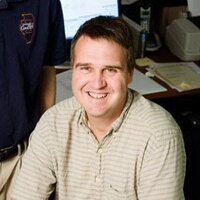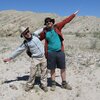

Petrology and Volcanology. Questions such as "How did Earth's continental crust form?" --- "How do magmatic system evolve to produce volcanic eruptions?" --- and "How is crust formed at mid-ocean ridges?" are at the forefront of research in high temperature petrology. The answers have far reaching impacts ranging from understanding our basic origins--without continental crust, there would be no evolution to complex life- to understanding cataclysmic volcanic super eruptions.
High temperature petrology at Illinois is breaking new ground in understanding magmatic processes of the Earth. Craig Lundstrom focuses on the process by which magmas form in the mantle and then evolve in the crust. Michael Stewart investigates melting and differentiation processes through trace element and isotope ratio measurements. Trish Gregg models melting beneath ridges and process of eruption of silicic magmas. Tectonic settings studied range from mid-ocean ridges to hot spots and convergent margins. These works involve both field based studies and experimental petrology using high pressure-temperature equipment. Facilities for this work include a state-of-the-art geochemistry laboratory (complete with laser ablation, ICPMS, multi collector ICPMS, and TIMS), an experimental petrology laboratory (piston cylinder and high temperature furnaces) and a dedicated SEM.
Mineralogy. The properties of minerals comprising the vast majority of Earth materials are essential to our understanding of many key processes. Prof. Jay Bass studies the properties and stability of minerals that make up the deep earth interior. Prof. Steve Altaner studies the clay minerals that are abundant in sedimentary risk and soils and are important industrial materials.





